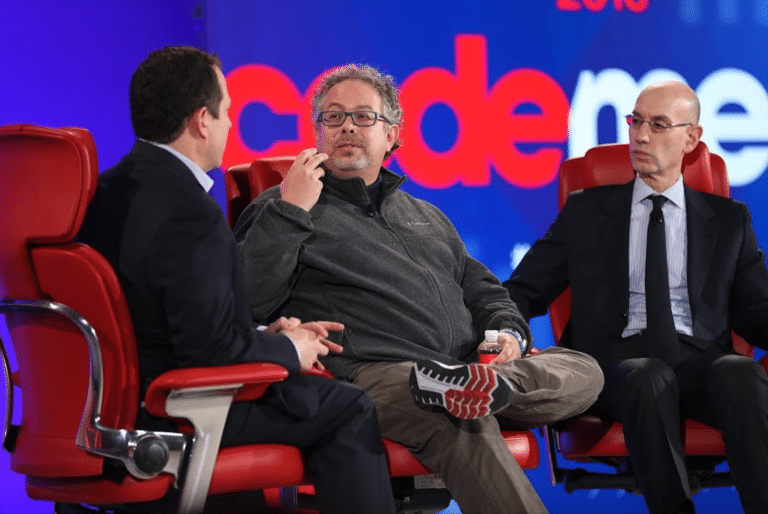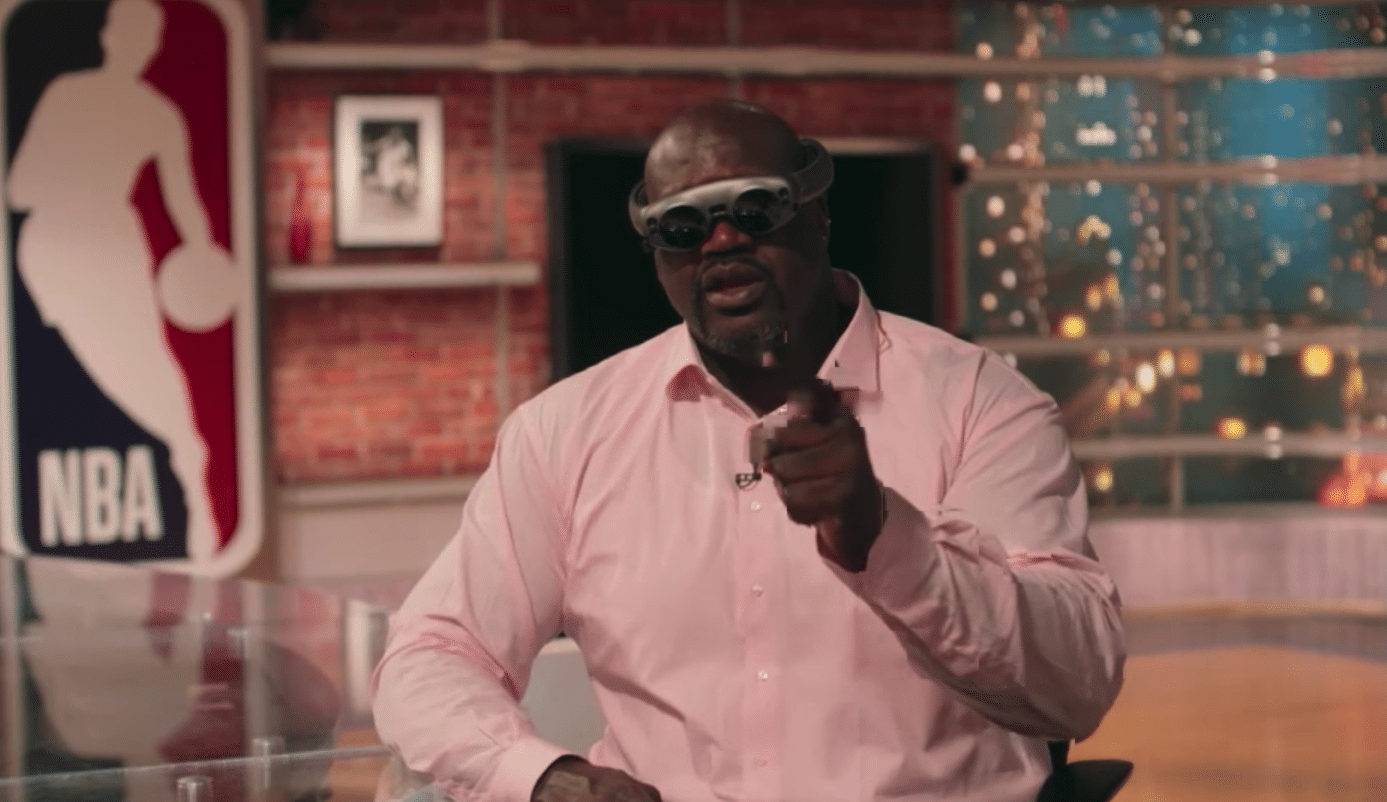
This week, the NBA, TNT and Magic Leap announced a new partnership. In what seems at first to be an odd union, it will deliver NBA content through various forms of AR, as discussed at the Code Media conference (video below).
“While we’ve made a lot of progress over the years, we’ve never quite found a way to take that experience that you have at a game and found a way to translate it through technology,” said NBA commissioner Adam Silver. “That’s where we see the opportunity with Magic Leap.”
Specifically, it will involve three formats for NBA content in AR/MR. One is a “skybox” view where full court coverage is overlaid on a flat surface (think: coffee table). Another is a court-side view and the third is a “sports bar” view that shows several screens playing different games.

“The NBA has been around for more than a century, so we kind of know what the great experiences are,” said Magic Leap CEO Rony Abovitz on stage. “We were thinking what is the ultimate fan experience and what mobile and television don’t really deliver.”
Of course we already have NBA games in VR through NextVR and others (as we discussed last year with the Golden State Warrior’s Kenny Lauer). But Magic Leap could bring a different flavor to immersive sports content that’s less socially isolating than VR. Even Shaquille O’neil thinks so.
“I think the NBA, once they get a hold of this technology, and some of the players, they’re really going to want to integrate their material and their content with Magic Leap,” Shaq said during a video shown during the conference interview with Silver and Abovitz.

But taking a devil’s advocate position, we have to ask: Is at-home sports viewing in its current form broken? The question is if Magic leap creates a user experience that’s several orders of magnitude better. That will be needed to justify cost and the friction of strapping on a headset.
And if it is that much better than what we have today (typical home theater), Magic leap will have a marketing challenge in conveying that experience to consumers without strapping a headset on every prospective buyer. You have to see it to believe it, so traditional marketing falls short.
But putting that aside, this is a positive step in that any experimentation with content and delivery formats is what XR needs. It’s also good for the NBA: As we discussed with the Warriors, XR is an opportunity to extend the up-close fan experience beyond arena inventory constraints.
“One of the things that attracted Magic Leap and Rony to the NBA was this notion of replicating the experience through technology,” said Silver. “Because it’s so enthralling to see it in person, but again we’re just limited in scale by the size of our arenas.”
See the full session below and stay tuned for more educational videos every Friday.
For a deeper dive on AR & VR insights, see ARtillry’s new intelligence subscription, and sign up for the free ARtillry Weekly newsletter.
Disclosure: ARtillry has no financial stake in the companies mentioned in this post, nor received payment for its production. Disclosure and ethics policy can be seen here.
Header Image credit: Vox Media / Recode
